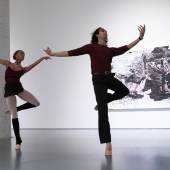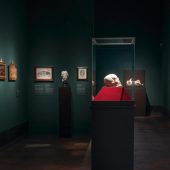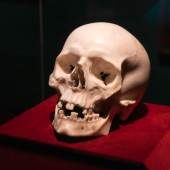How This Masterful Marble Skull Became Attributed to the Great Baroque Artist Bernini
-
Ausstellung30.10.2014 - 28.10.2021
The importance of the bigger picture: Bernini’s life and career
While the skull’s provenance provided a clear path to attribution, gaining an understanding of the artist’s life and career was equally important. “It’s not all in the documents; one always has to look at the entire picture,” says Kryza-Gersch. Under the pontificate of Pope Urban VIII, Bernini rose to the ranks to become the preeminent artist in Rome. However, when Urban VIII died, he was succeeded by Innocent X, and Bernini fell from grace due to personal animosities and his failed bell towers for Saint Peter’s Cathedral. The election of a new pope introduced an opportunity for Bernini to turn the page. “Only three days after Fabio became Alexander VII, Bernini was commissioned to create a skull, which the pope wanted to keep on his desk as a permanent memento mori. Visible evidence of this is provided by a portrait of Alexander VII by Bernini’s pupil Guido Ubaldi Abbatini, who died in 1656 of the plague—a strong reminder of just how quickly life could be over in the 17th century. This painting can be seen in the exhibition as a loan from the Collection of the Sovereign Military Order of Malta, Rome.” The skull may seem a small and almost humble commission, but it was certainly a very important one for Bernini, because it had the potential to stand at the beginning of a hopefully fruitful relationship with the new pope. And indeed, Bernini and Alexander VII, who were almost of the same age, became friends and together transformed Rome into the city we know today. “If one considers the commission of the skull from the point of view of Bernini’s career, it seems clear that it was far too significant to be left to an assistant,” says Kryza-Gersch.
Insight into Bernini’s religious beliefs and routines also provided a broader understanding of the context in which the artist lived and worked, and the importance of this commission from a personal perspective. “One knows how deeply religious Bernini was and that he reflected a lot about death. Since the 1640s, every Friday he attended what were known as the “devotions of the good death” in the Jesuit church of il Gesù. Like Alexander VII, Bernini considered death as a way to heaven for which one had to prepare. Someone with such deep devotion who receives this commission from the newly-elected pope does not leave the execution to someone else,” says Kryza-Gersch. “In my view, there can be no doubt that the Death’s Head in Dresden is the very same one that Bernini executed personally for Alexander VII in 1655.”
“Death’s Head is actually the ‘portrait of a skull,’ and that makes it such a deeply moving work of art.” — Claudia Kryza-Gersch A realistically rendered “portrait of a skull”
For Kryza-Gersch, one of the Death’s Head elements that most demonstrates Bernini’s artistic personality—and one of its most striking features—is its realism. Introducing other fields of research, she shares that it was confirmed by a forensic anthropologist that, anatomically, the skull is rendered almost perfectly. “The only liberty that Bernini took was to enlarge the hole on the underside, likely to have better access hollowing it out. This degree of observation, subtlety, and virtuosity with which every detail is rendered connects the Death’s Head with Bernini’s brilliant portrait busts. He devoted the same care he gave a portrait of a living man to the rendering of the skull—Death’s Head is actually the ‘portrait of a skull,’ and that makes it such a deeply moving work of art.”
This interview has been edited and condensed.
Von Cheyenne Wehren 22. Oktober 2021
-
25.03.2021Psychological Portraiture by Pablo Picasso Picasso’s powerful seated portraits of...
-
23.06.2020 - 30.06.2021SWISS MADE UNLOCKEDA BRAND-NEW MULTI-DISCIPLINARY ONLINE AUCTIONOVER 200 LOTS | 13 COLLECTING...
-
01.12.2020 - 14.12.2020Partnership Celebrates Sotheby’s Festival of Wonder Luxury Sale Series,Including Live and...
-
Das Kunsthaus Dresden als städtische Galerie für Gegenwartskunst bietet mit seinen wechselnden...
-
1523 wurde Andrea Gritti Doge von Venedig. Er war ehrgeizig und sein Ziel war es, Venedig zur...
-
15.03.2025 - 20.03.2025Die TEFAF (The European Fine Art Fair) ist eine der weltweit renommiertesten Kunst- und...
-
30.10.2014 - 28.10.2021
.


















